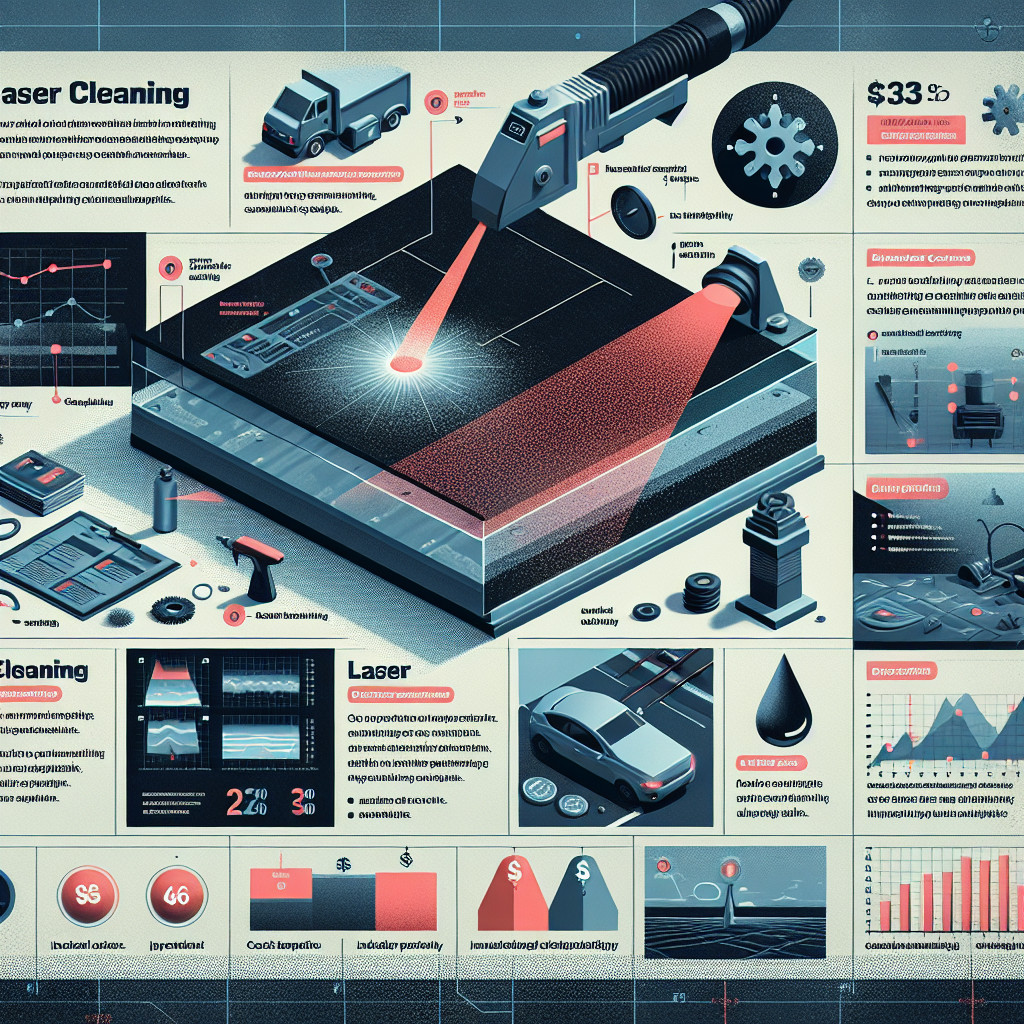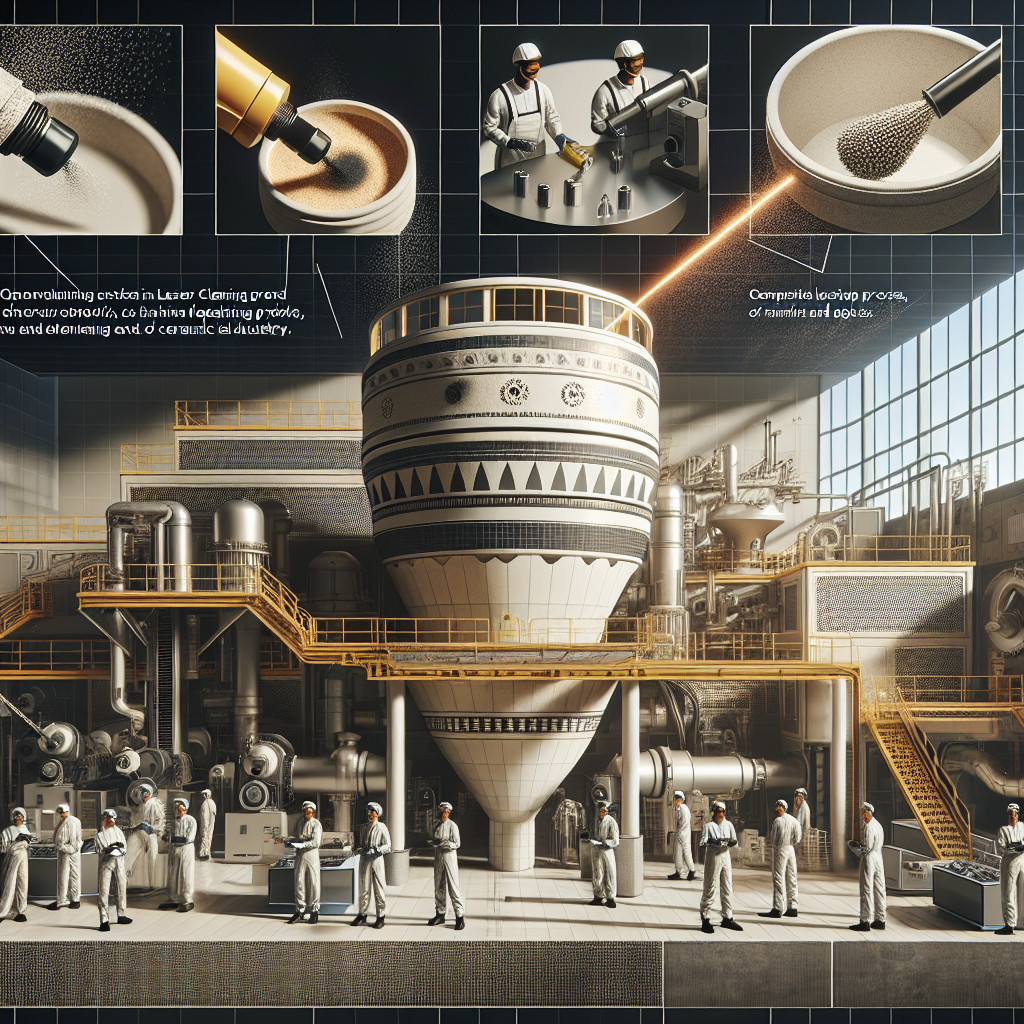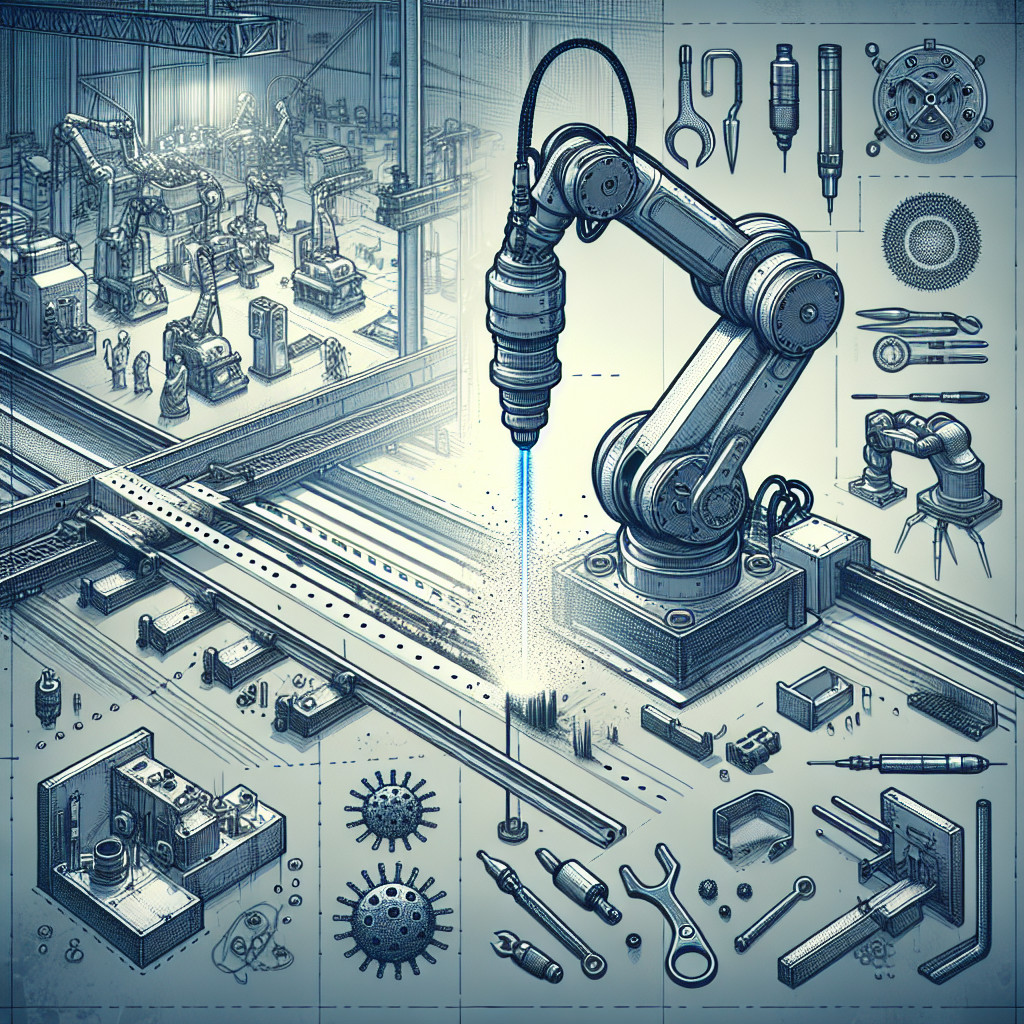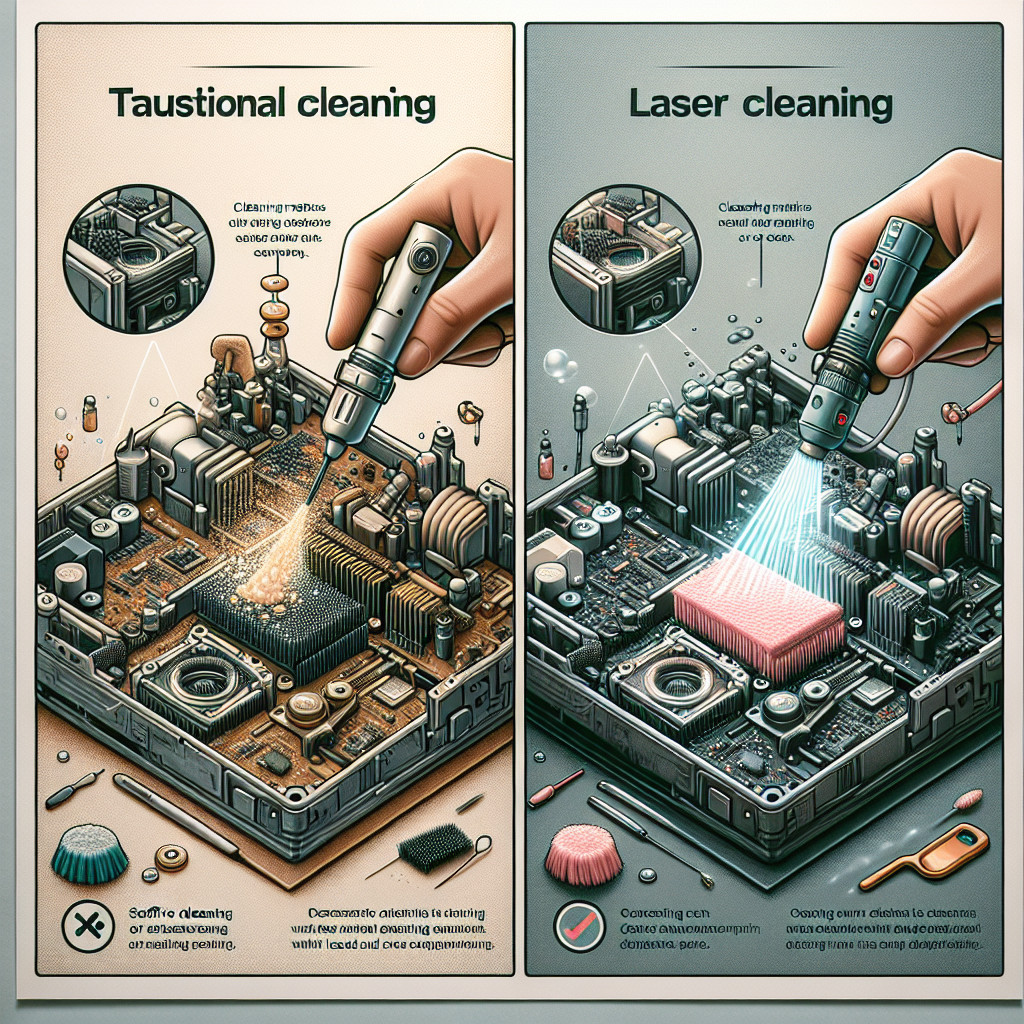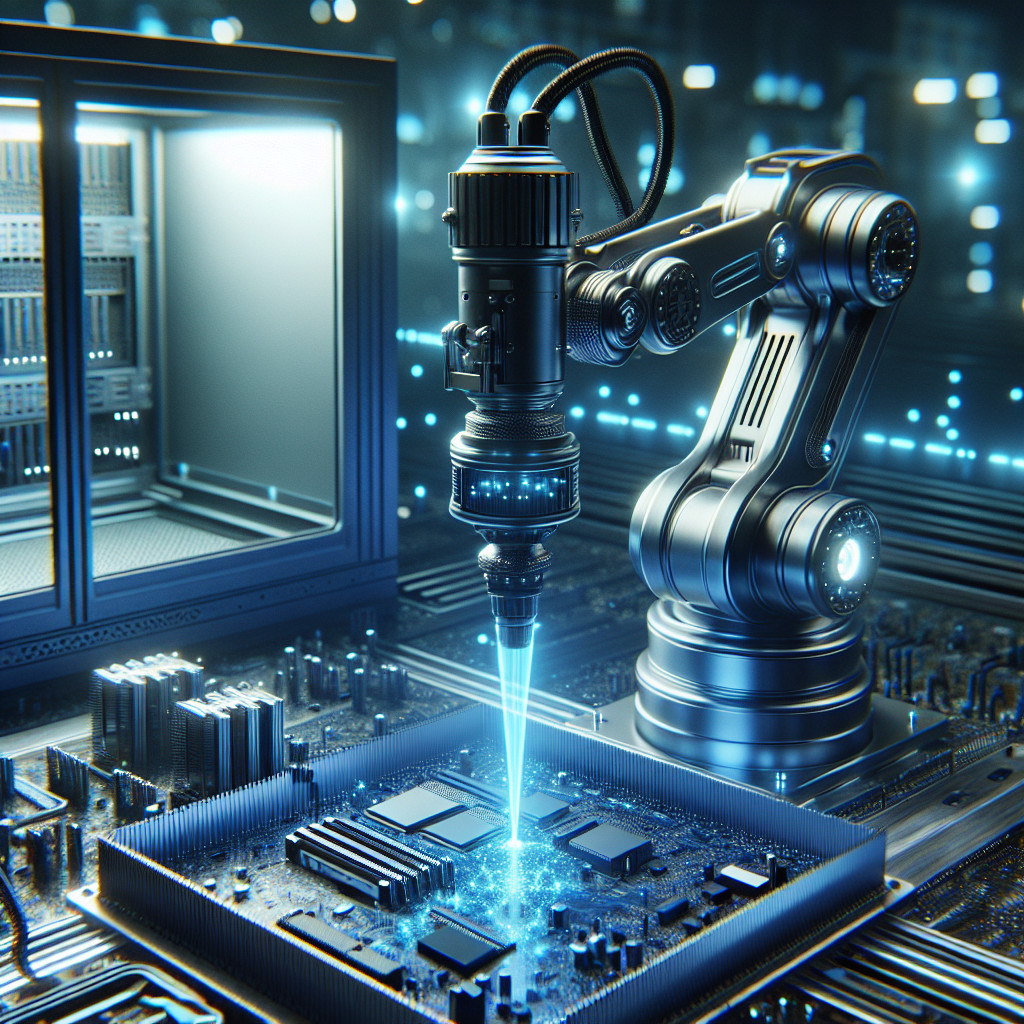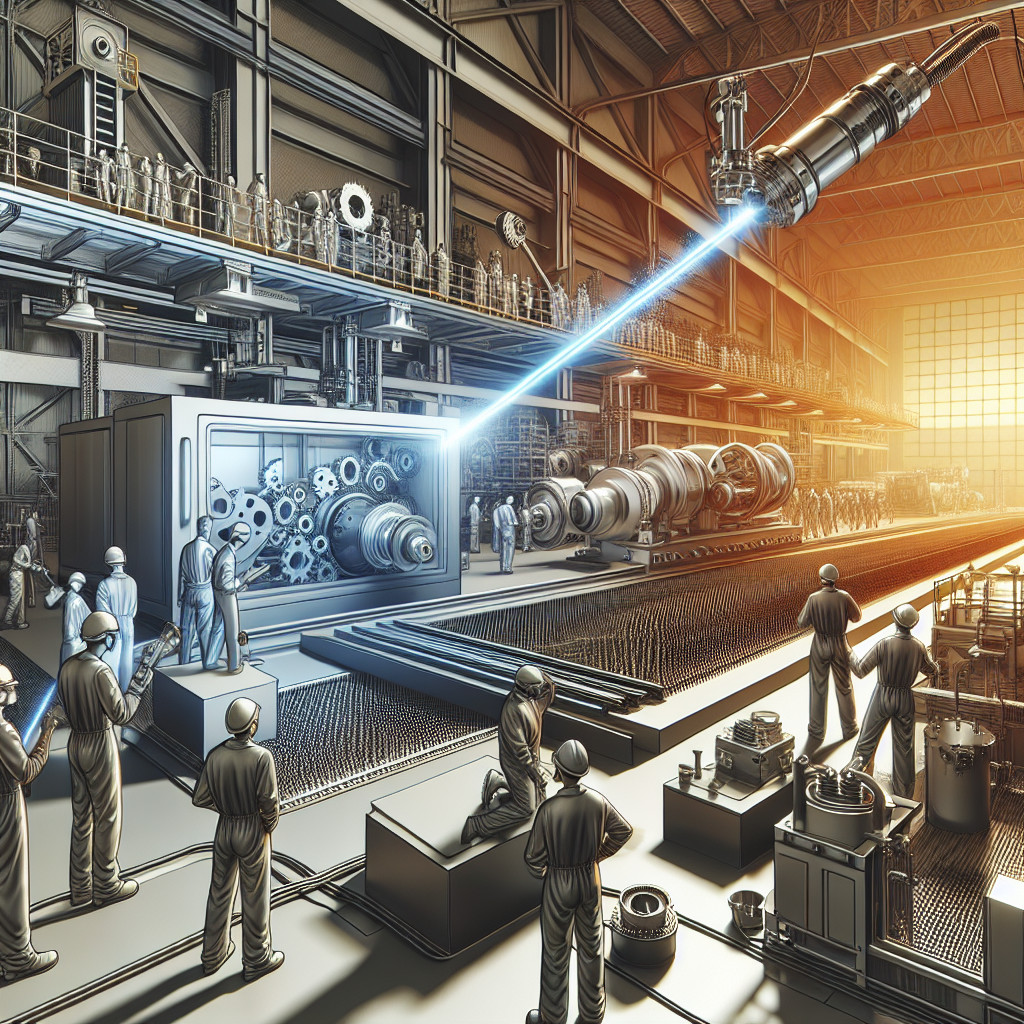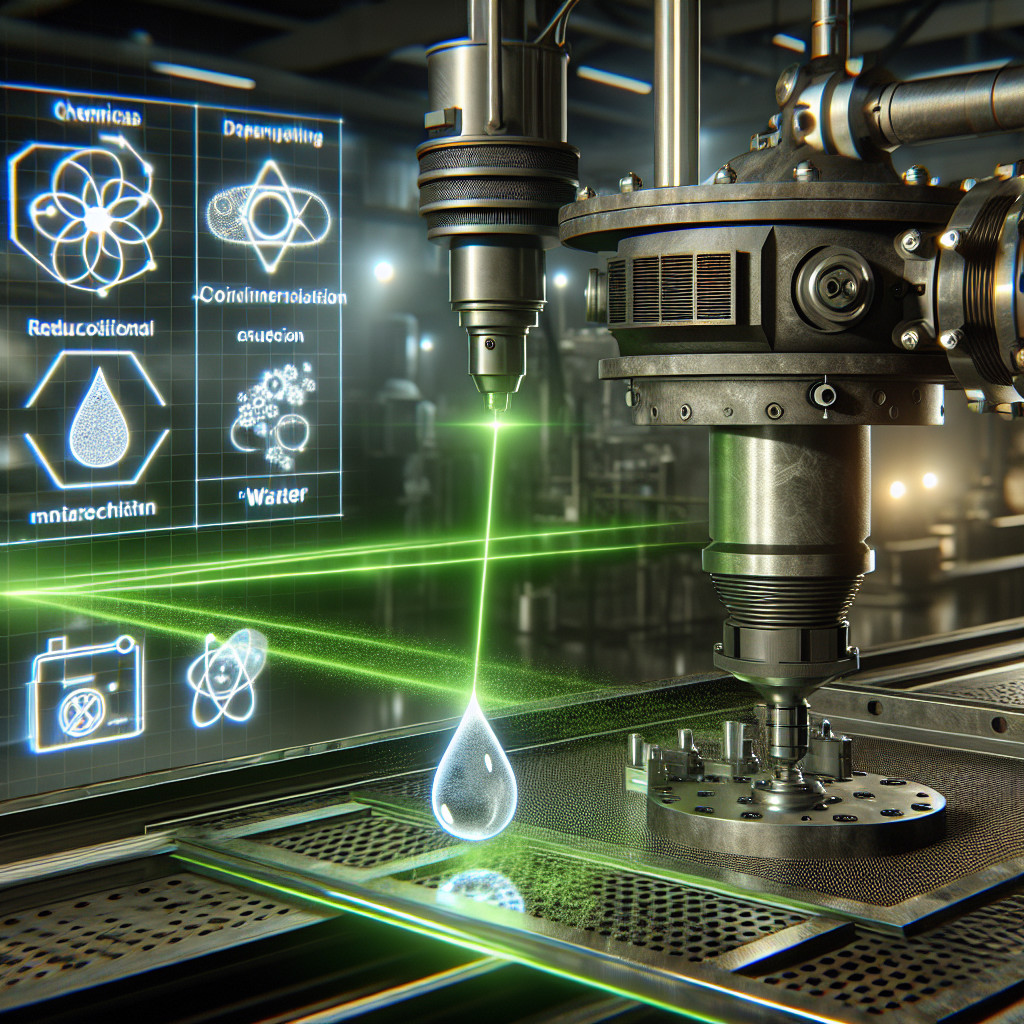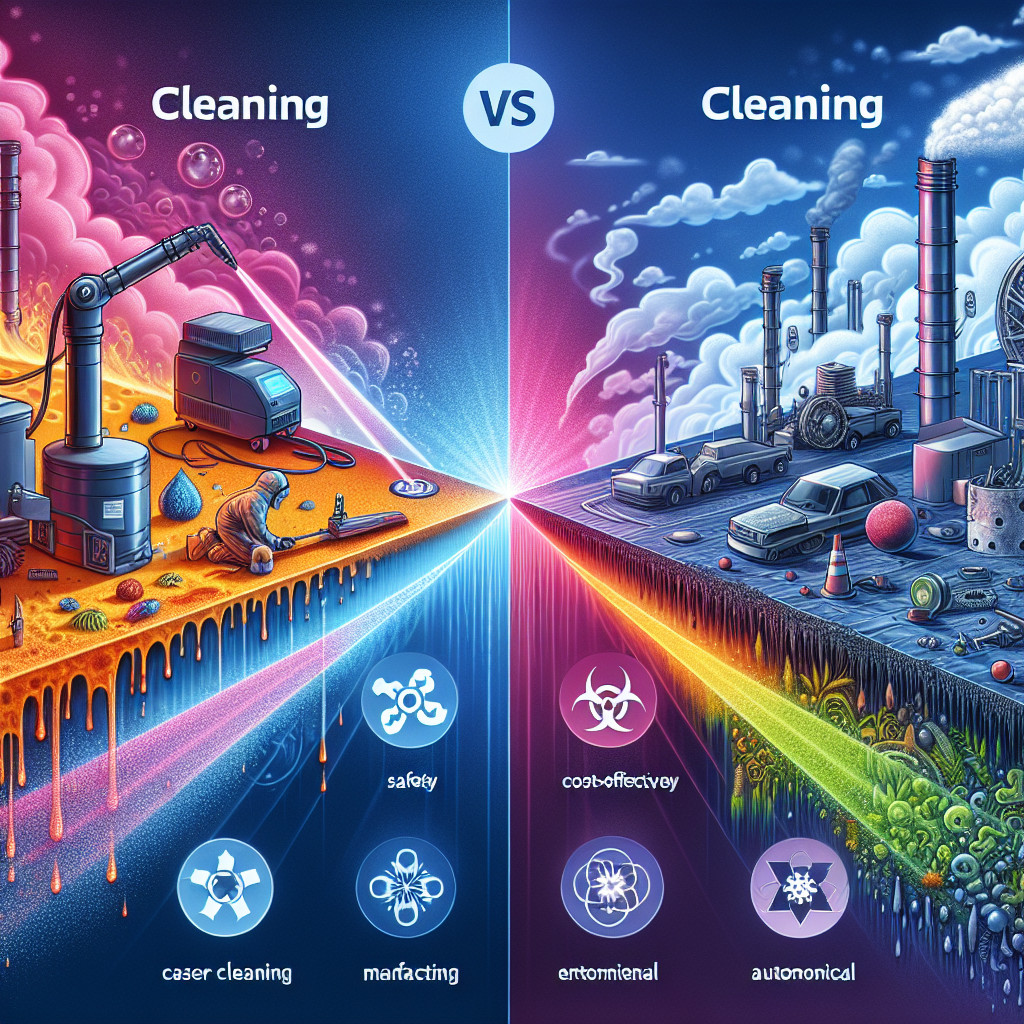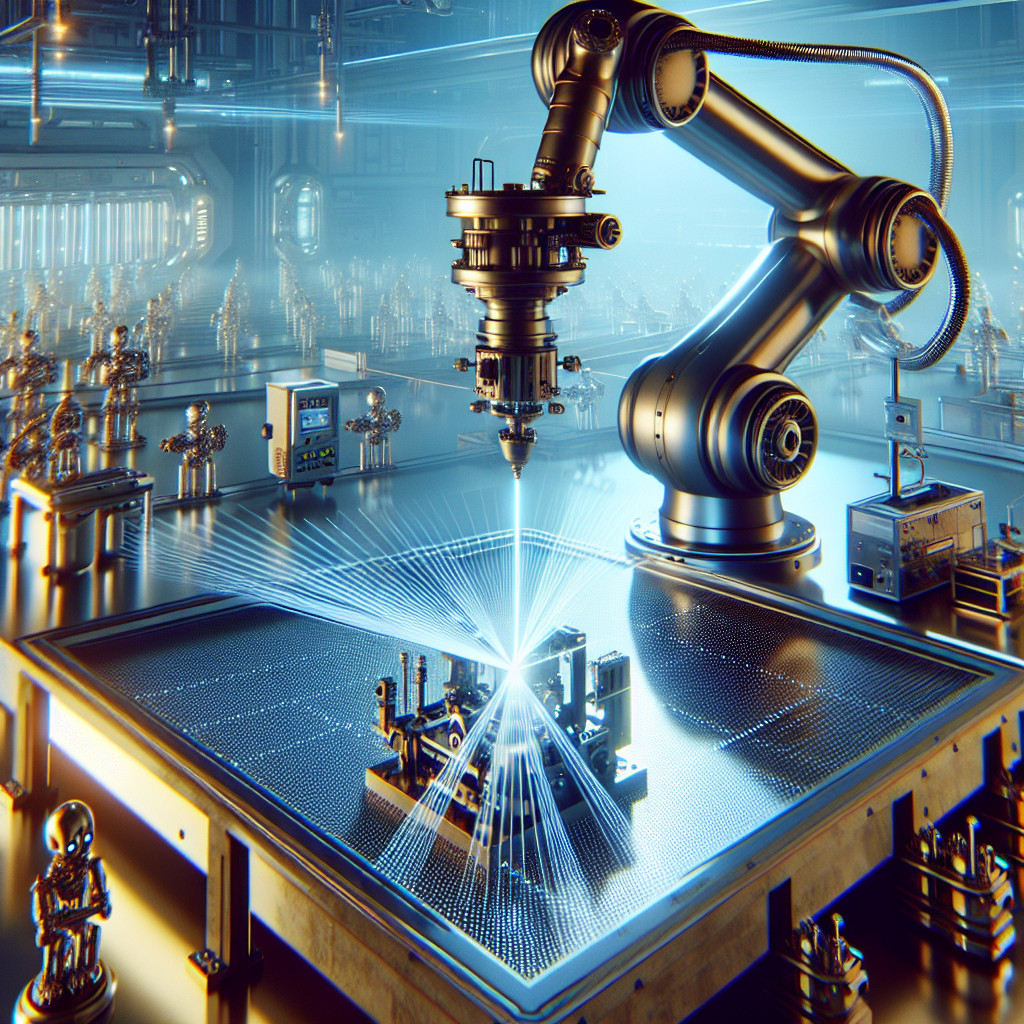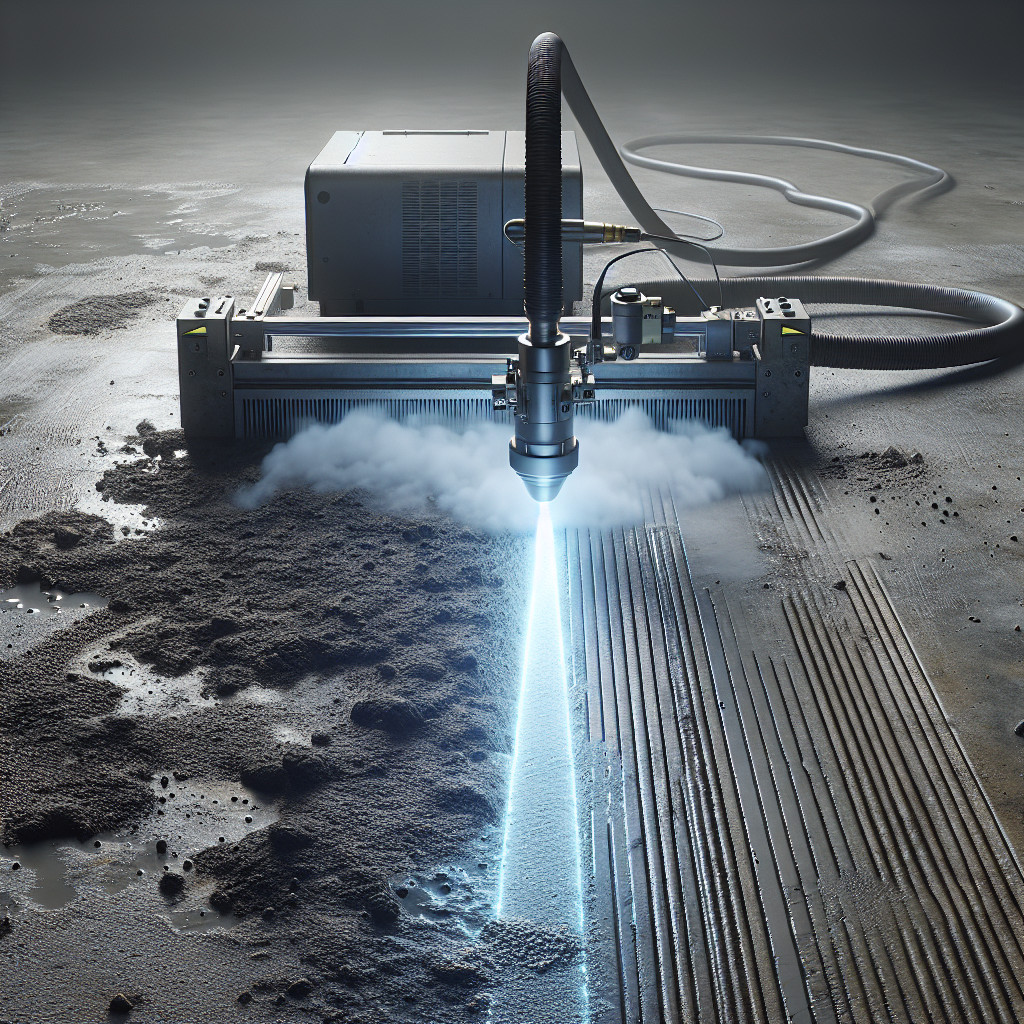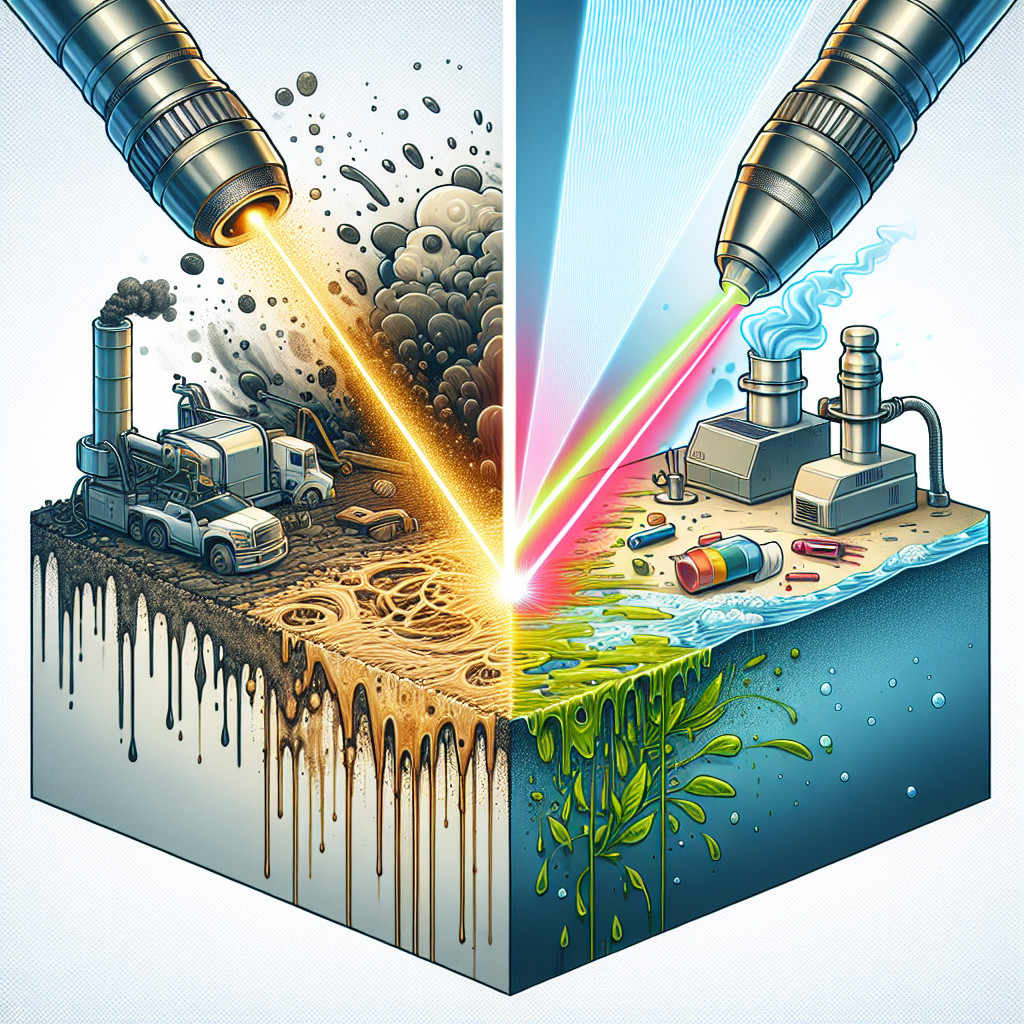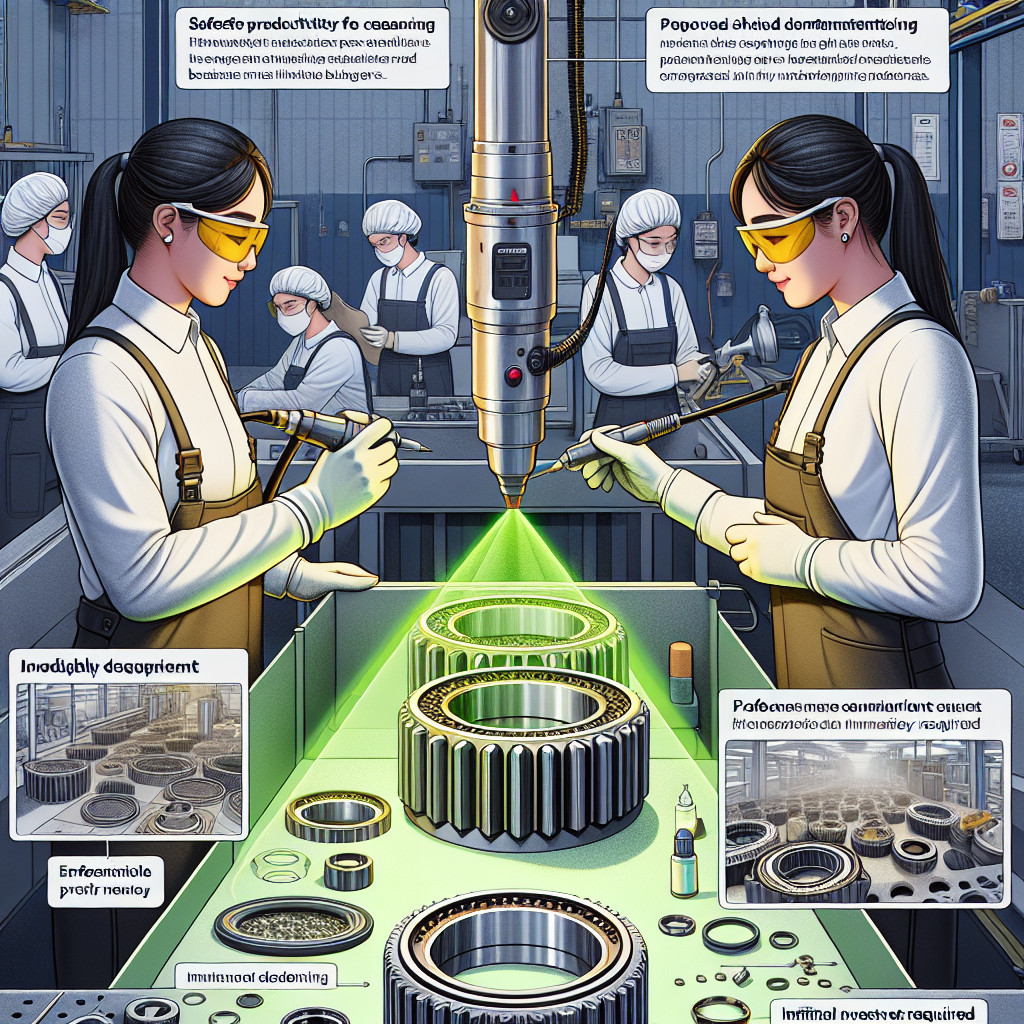- Training requirements for laser cleaning operators
- Risk assessment and management in laser cleaning operations
- Fire prevention and control measures during laser cleaning
- Laser cleaning in sports facilities: safety in turf and field maintenance
- Laser cleaning in retail industry: safety in store and display cleaning
- The importance of safety procedures during laser cleaning
- Emergency response procedures for laser cleaning accidents
- Safe working distances during laser cleaning
Training requirements for laser cleaning operators
Laser cleaning involves the use of high-intensity laser beams to vaporize or ablate unwanted materials from surfaces. While it offers numerous advantages over traditional cleaning methods, such as reduced chemical usage and minimal damage to the substrate, it also poses certain risks if not performed correctly. Therefore, comprehensive training is essential to ensure operators possess the knowledge and skills to operate laser cleaning systems safely and effectively.
The first step in training laser cleaning operators is to provide them with a thorough understanding of laser technology and its principles. This includes educating them about the different types of lasers used in cleaning applications, their characteristics, and the potential hazards associated with laser radiation. Operators must learn about laser classifications, safety measures, and the importance of wearing appropriate personal protective equipment (PPE) to prevent eye and skin injuries.
Additionally, operators should be trained in laser system setup and maintenance. They need to understand the components of a laser cleaning system, including the laser source, optics, and control unit. Training should cover topics such as laser beam alignment, focusing techniques, and troubleshooting common issues that may arise during operation. Proper maintenance procedures, including cleaning and calibrating the system, should also be emphasized to ensure optimal performance and longevity of the equipment.
Furthermore, operators must be familiarized with the specific applications and materials that can be treated using laser cleaning. Different surfaces and contaminants may require varying laser parameters, such as pulse duration, energy density, and spot size. Training should focus on identifying suitable laser settings for different cleaning tasks and understanding the effects of laser parameters on the target material. This knowledge is crucial to achieve desired cleaning results without causing damage to the substrate.
Hands-on training is a vital component of laser cleaning operator education. Operators should have the opportunity to practice using laser cleaning systems under the supervision of experienced trainers. This practical training should include tasks such as setting up the equipment, adjusting laser parameters, and performing cleaning operations on various surfaces. By gaining hands-on experience, operators can develop the necessary skills and confidence to handle different cleaning challenges effectively.
To ensure ongoing competence, regular refresher training and continuous professional development are essential for laser cleaning operators. As technology advances and new laser cleaning systems are introduced, operators need to stay updated with the latest developments and best practices. This can be achieved through participation in workshops, seminars, and industry conferences, as well as engaging in online resources and publications related to laser cleaning.
In conclusion, the are multifaceted and encompass various aspects of laser technology, safety, system setup, material understanding, and practical skills. Acquiring the necessary knowledge and skills through comprehensive training is crucial to ensure safe and successful laser cleaning operations. By adhering to proper training protocols and continuously updating their skills, laser cleaning operators can contribute to the efficient and sustainable use of this innovative cleaning technology.
Keywords: laser cleaning, training requirements, laser technology, laser radiation, personal protective equipment, laser system setup, maintenance procedures, laser parameters, hands-on training, ongoing competence, continuous professional development, best practices.
Long-tail phrases: comprehensive training for laser cleaning operators, importance of laser cleaning operator training, hands-on experience in laser cleaning, ongoing professional development for laser cleaning operators, best practices in laser cleaning operations.
Risk assessment and management in laser cleaning operations
Laser cleaning involves the use of high-powered lasers that emit intense beams of light. These lasers can cause severe burns, eye injuries, and even fires if not handled properly. Additionally, the process may generate hazardous fumes, dust, and debris, which can pose health risks to workers. Understanding these risks is the first step towards effective risk management.
2. Conducting a Risk Assessment:
A thorough risk assessment is essential to identify potential hazards and evaluate the associated risks. This assessment should consider factors such as laser power, beam characteristics, surface materials, ventilation systems, and personal protective equipment (PPE) requirements. It should also take into account the specific environment in which the laser cleaning operation will be conducted.
3. Implementing Risk Control Measures:
Once the risks have been identified, appropriate control measures should be implemented to minimize or eliminate them. This may include engineering controls such as interlocks, enclosures, and ventilation systems to reduce exposure to laser beams and hazardous fumes. Administrative controls like training programs, standard operating procedures (SOPs), and signage can also help mitigate risks. Personal protective equipment, including laser safety glasses, gloves, and protective clothing, should be provided to workers as a last line of defense.
4. Training and Education:
Proper training and education are crucial for all personnel involved in laser cleaning operations. Workers should be trained on the safe use of lasers, hazard identification, emergency procedures, and the proper use of PPE. Regular refresher courses should be conducted to ensure that employees stay updated on the latest safety protocols.
5. Emergency Preparedness:
Despite all preventive measures, accidents can still occur. Therefore, it is essential to have a robust emergency preparedness plan in place. This plan should include procedures for responding to laser-related injuries, fires, chemical spills, and other emergencies. Adequate fire suppression systems, first aid kits, and emergency eyewash stations should be readily available.
6. Regular Inspections and Maintenance:
Regular inspections and maintenance of laser cleaning equipment are crucial to ensure their safe and efficient operation. This includes checking for any signs of wear and tear, verifying the calibration of laser power, and ensuring that all safety features are functioning correctly. Any defects or malfunctions should be promptly addressed to prevent accidents.
7. Compliance with Regulations and Standards:
Laser cleaning operations are subject to various regulations and standards set by governmental bodies and industry organizations. It is essential to stay updated with these requirements and ensure compliance. This may include obtaining necessary permits, conducting periodic audits, and maintaining proper documentation of risk assessments, training records, and maintenance logs.
In conclusion, risk assessment and management are vital components of laser cleaning operations. By understanding the risks, conducting thorough assessments, implementing control measures, providing adequate training, and being prepared for emergencies, the safety of personnel, equipment, and the environment can be ensured. Laser cleaning operations can be conducted efficiently and effectively while minimizing the potential for accidents and injuries.
Keywords: risk assessment, risk management, laser cleaning operations, hazards, laser power, beam characteristics, ventilation systems, personal protective equipment, training, emergency preparedness, inspections, maintenance, compliance.
Long-tail phrases:
– Importance of
– Hazards and risks associated with laser cleaning
– Control measures for laser cleaning operations
– Training and education for laser cleaning personnel
– Emergency preparedness in laser cleaning operations
– Regular inspections and maintenance in laser cleaning
– Compliance with regulations and standards in laser cleaning.
Fire prevention and control measures during laser cleaning
First and foremost, it is essential to conduct a thorough risk assessment before starting any laser cleaning operation. This assessment should identify potential fire hazards and determine the appropriate control measures to be implemented. It is crucial to consider the type of surface being cleaned, the presence of flammable materials, and the proximity to other combustible substances.
To prevent fires, it is necessary to ensure that the work area is free from any flammable materials. This includes removing or properly securing any loose debris, dust, or other combustible substances. Additionally, it is important to establish a designated area for storing flammable materials away from the laser cleaning operation.
Proper ventilation is another critical aspect of fire prevention during laser cleaning. Adequate airflow helps dissipate any fumes or vapors that may be generated during the process, reducing the risk of ignition. It is recommended to use local exhaust ventilation systems or portable ventilation units to maintain a safe working environment.
Furthermore, it is essential to have appropriate fire suppression systems in place. This includes having fire extinguishers readily available in the vicinity of the laser cleaning operation. The extinguishers should be suitable for extinguishing fires involving flammable materials, such as Class B or Class C fires. Regular maintenance and inspection of these extinguishers are necessary to ensure their effectiveness.
In addition to fire extinguishers, it is advisable to install automatic fire detection systems, such as smoke detectors or heat sensors, in the area where laser cleaning is performed. These systems can quickly detect the presence of smoke or heat and activate alarms, allowing for prompt evacuation and fire suppression actions.
Proper training and education of the operators are also crucial in fire prevention and control during laser cleaning. Operators should be trained on the safe handling and operation of laser cleaning equipment, as well as the necessary fire prevention measures. They should be aware of the potential fire hazards and know how to respond in case of an emergency.
To summarize, fire prevention and control measures are of utmost importance during laser cleaning operations. Conducting a thorough risk assessment, removing flammable materials from the work area, ensuring proper ventilation, having fire suppression systems in place, and providing adequate training to operators are all essential steps in maintaining a safe working environment.
Keywords: fire prevention, control measures, laser cleaning, risk assessment, flammable materials, ventilation, fire suppression systems, fire extinguishers, automatic fire detection systems, training, operators.
Long-tail phrases:
– Importance of fire prevention and control during laser cleaning operations
– Risk assessment in laser cleaning: identifying fire hazards
– Preventing fires during laser cleaning: removing flammable materials
– Ventilation systems for fire prevention during laser cleaning
– Fire suppression systems for laser cleaning operations
– Training operators for fire prevention during laser cleaning
Laser cleaning in sports facilities: safety in turf and field maintenance
One of the primary advantages of laser cleaning in sports facilities is its ability to provide a thorough and precise cleaning process. The laser beams can target specific areas or spots on the turf or field, ensuring that all contaminants are effectively removed. This level of precision is particularly crucial in sports facilities where the playing surface needs to be free from any potential hazards that could affect the performance or safety of athletes.
Another significant benefit of laser cleaning is its non-invasive nature. Unlike traditional cleaning methods that may require the use of chemicals or excessive water, laser cleaning is a dry process that does not introduce any additional substances to the playing surface. This aspect is particularly important in sports facilities where the use of chemicals or excessive water can potentially damage the turf or field, leading to costly repairs or replacements.
Furthermore, laser cleaning is a time-efficient method of maintaining sports facilities. The process is quick and does not require extensive preparation or cleanup. With traditional cleaning methods, such as pressure washing, the downtime of the playing surface can be significant, affecting the scheduling of events or practices. Laser cleaning minimizes this downtime, allowing sports facilities to resume their activities promptly.
Safety is a paramount concern in sports facilities, and laser cleaning contributes to ensuring a safe playing environment. By effectively removing dirt, debris, and microorganisms, laser cleaning reduces the risk of slips, trips, and falls for athletes. Additionally, the elimination of potentially harmful substances, such as mold or bacteria, helps prevent the spread of infections or diseases among athletes and staff.
In conclusion, laser cleaning is a revolutionary technology that offers numerous benefits in the maintenance of sports facilities. Its precision, non-invasiveness, time-efficiency, and safety-enhancing properties make it an ideal choice for turf and field cleaning. By utilizing laser cleaning, sports facilities can maintain a high standard of cleanliness and safety, ultimately enhancing the overall experience for athletes and spectators alike.
Keywords: laser cleaning, sports facilities, turf maintenance, field maintenance, safety, non-contact, non-abrasive, contaminants, precision, non-invasive, time-efficient, dry process, downtime, slips, trips, falls, microorganisms, infections, diseases.
Long-tail phrases:
– Laser cleaning in sports facilities: a game-changer in turf and field maintenance
– The benefits of laser cleaning in sports facilities: efficiency and effectiveness combined
– Laser cleaning: the future of turf and field maintenance in sports facilities
– Enhancing safety in sports facilities: the role of laser cleaning in turf and field maintenance.
Laser cleaning in retail industry: safety in store and display cleaning
Moreover, laser cleaning is an environmentally friendly alternative to traditional cleaning methods. Unlike chemical-based cleaners, laser cleaning does not produce any harmful fumes or residues that can pollute the air or water. This makes it an ideal choice for retailers who prioritize sustainability and wish to reduce their carbon footprint. By adopting laser cleaning technology, retailers can contribute to a cleaner and healthier environment while maintaining the highest standards of cleanliness in their stores.
Safety is another crucial aspect of retail operations, and laser cleaning plays a significant role in ensuring a safe shopping environment for both customers and employees. Retail stores often have numerous high-traffic areas, such as entrances, aisles, and checkout counters, which are prone to spills and accidents. Laser cleaning can effectively remove spills, stains, and other hazards from these areas, reducing the risk of slips and falls. Additionally, laser cleaning can eliminate bacteria and germs from surfaces, helping to prevent the spread of diseases and ensuring a hygienic shopping environment.
Furthermore, laser cleaning technology offers retailers a cost-effective solution for maintaining cleanliness in their stores. Traditional cleaning methods often require the use of expensive cleaning agents, equipment, and labor. Laser cleaning, on the other hand, eliminates the need for costly chemicals and reduces the amount of time and effort required for cleaning tasks. This can result in significant cost savings for retailers, allowing them to allocate their resources more efficiently and invest in other areas of their business.
In conclusion, laser cleaning has revolutionized the retail industry by providing a safe, efficient, and environmentally friendly method of store and display cleaning. Its ability to remove contaminants without causing damage, its contribution to a cleaner environment, and its role in ensuring safety make it an invaluable tool for retailers. By adopting laser cleaning technology, retailers can enhance the overall shopping experience for their customers, maintain the visual appeal of their stores, and contribute to a sustainable future.
Keywords: laser cleaning, retail industry, store cleaning, display cleaning, safety, cleanliness, sustainability, environmental-friendly, cost-effective.
Long-tail phrases: laser cleaning technology in retail, benefits of laser cleaning in stores, environmentally friendly cleaning methods in retail, safety in retail store cleaning, cost savings with laser cleaning in retail.
The importance of safety procedures during laser cleaning
Another critical safety consideration is the risk of fire. Laser beams can generate intense heat, especially when focused on a small area for an extended period. This heat can ignite flammable materials, leading to fires or explosions. To minimize this risk, it is crucial to ensure that the cleaning area is free from any flammable substances or materials. Additionally, operators should be trained to monitor the cleaning process closely and be prepared to extinguish any potential fires immediately.
Furthermore, laser cleaning equipment should be properly maintained and regularly inspected to ensure its safe operation. Any damaged or malfunctioning components should be repaired or replaced promptly to prevent accidents. Operators should also be trained on the correct usage of the equipment, including how to handle emergencies and shut down the system safely if necessary.
In addition to these safety measures, it is essential to consider the potential hazards associated with the materials being cleaned. Some substances, such as lead-based paint or asbestos, can release toxic fumes or particles when exposed to laser beams. Therefore, it is crucial to identify and assess the risks associated with the materials being cleaned and take appropriate measures to protect the health of operators and bystanders. This may include using proper ventilation systems or wearing respiratory protection.
Lastly, it is crucial to establish clear safety procedures and protocols for laser cleaning operations. These procedures should outline the necessary safety precautions, emergency response plans, and training requirements for operators. Regular safety drills and refresher training sessions should also be conducted to ensure that all personnel are familiar with the safety procedures and can respond effectively in case of an emergency.
In conclusion, safety should be the top priority when using laser cleaning equipment. By implementing proper safety procedures, wearing appropriate protective gear, and conducting regular maintenance and inspections, the risks associated with laser cleaning can be minimized. It is essential to prioritize the well-being of operators and bystanders and ensure that laser cleaning operations are conducted in a safe and responsible manner.
Keywords: laser cleaning, safety procedures, eye injuries, fire risk, equipment maintenance, toxic substances, safety protocols, protective gear, emergency response.
Long-tail phrases:
1. Importance of laser cleaning safety procedures
2. Preventing eye injuries during laser cleaning
3. Minimizing fire risk in laser cleaning operations
4. Maintaining and inspecting laser cleaning equipment
5. Hazards of toxic substances during laser cleaning
6. Establishing safety protocols for laser cleaning
7. Prioritizing safety in laser cleaning operations.
Emergency response procedures for laser cleaning accidents
2. Evacuate the Area: If the accident poses an immediate threat to the safety of personnel, evacuate the area immediately. Ensure that everyone is aware of the danger and follows established evacuation routes to reach a safe location.
3. Alert Emergency Services: Contact the appropriate emergency services, such as fire departments or medical personnel, depending on the nature of the accident. Provide them with accurate information about the incident, including the type of laser equipment involved and any potential hazards.
4. Secure the Area: Once the area has been evacuated, secure it to prevent unauthorized access. Use caution signs, barriers, or any other means necessary to keep people away from the accident site until it has been deemed safe.
5. Provide First Aid: If there are injured individuals, provide immediate first aid until professional medical help arrives. Ensure that designated personnel are trained in basic first aid procedures and have access to first aid kits.
6. Identify the Cause: Investigate the accident to determine its cause. This step is crucial in preventing similar incidents in the future. Identify any equipment malfunctions, operator errors, or other contributing factors that led to the accident.
7. Mitigate Hazards: If there are any ongoing hazards, take appropriate measures to mitigate them. This may involve shutting down equipment, isolating affected areas, or implementing temporary safety measures until a permanent solution can be implemented.
8. Document the Incident: Maintain detailed records of the accident, including photographs, witness statements, and any other relevant information. This documentation will be valuable for insurance claims, legal purposes, and future safety improvements.
9. Review and Improve Procedures: After the incident has been resolved, conduct a thorough review of the emergency response procedures. Identify any shortcomings or areas for improvement and update the protocols accordingly. Regularly train personnel on the revised procedures to ensure their effectiveness.
Keywords: emergency response, laser cleaning accidents, safety procedures, evacuation, first aid, hazard mitigation, incident investigation, documentation, procedure review, personnel training.
Long-tail phrases: laser cleaning accident response procedures, emergency protocols for laser cleaning accidents, steps to handle laser cleaning accidents, safety measures for laser cleaning incidents, effective emergency response for laser cleaning accidents.
Safe working distances during laser cleaning
One of the primary concerns during laser cleaning is the emission of laser radiation. Laser beams can cause severe eye injuries or skin burns if proper safety measures are not followed. Therefore, maintaining a safe working distance is crucial to minimize the risk of exposure to laser radiation.
The safe working distance refers to the distance between the laser cleaning device and the surface being cleaned. It is determined by various factors, including the laser power, beam diameter, and the specific material being cleaned. The laser manufacturer typically provides guidelines on the recommended safe working distances for their specific equipment.
The safe working distance is essential because it determines the laser beam’s divergence and intensity at the surface. As the distance increases, the laser beam spreads out, reducing its intensity. This reduction in intensity ensures that the laser beam does not exceed the maximum permissible exposure (MPE) limits set by safety standards.
To determine the appropriate safe working distance, operators must consider the laser’s power and wavelength. Higher-powered lasers generally require larger safe working distances to maintain safe exposure levels. Additionally, different materials may have varying laser absorption properties, affecting the required safe working distance.
It is crucial to note that safe working distances are not fixed values but rather a range within which the laser cleaning process can be safely performed. Operators must also consider other factors, such as the cleanliness of the laser optics, the angle of incidence, and the duration of exposure.
In addition to maintaining a safe working distance, operators should also wear appropriate personal protective equipment (PPE) to further minimize the risk of laser-related injuries. This may include laser safety glasses or goggles that provide adequate protection against the specific laser wavelength being used.
In conclusion, are of utmost importance to ensure the safety of operators and the surrounding environment. Adhering to the recommended guidelines provided by the laser manufacturer and considering factors such as laser power, wavelength, and material being cleaned is crucial. By maintaining a safe working distance and wearing appropriate PPE, operators can minimize the risk of laser-related injuries and perform laser cleaning effectively and safely.
Keywords: laser cleaning, safe working distances, laser radiation, laser beam, maximum permissible exposure, laser power, laser wavelength, personal protective equipment, laser safety glasses, laser-related injuries.
Long-tail phrases:
– Importance of
– Factors to consider for determining safe working distances in laser cleaning
– Guidelines for maintaining
– Personal protective equipment for laser cleaning safety
– Laser cleaning: minimizing the risk of laser-related injuries
- Laser cleaning and long-term cost savings – cost analysis - February 29, 2024
- Laser cleaning and reducing emissions of harmful substances - February 28, 2024
- Can laser cleaning be used in veterinary medicine? - February 28, 2024



